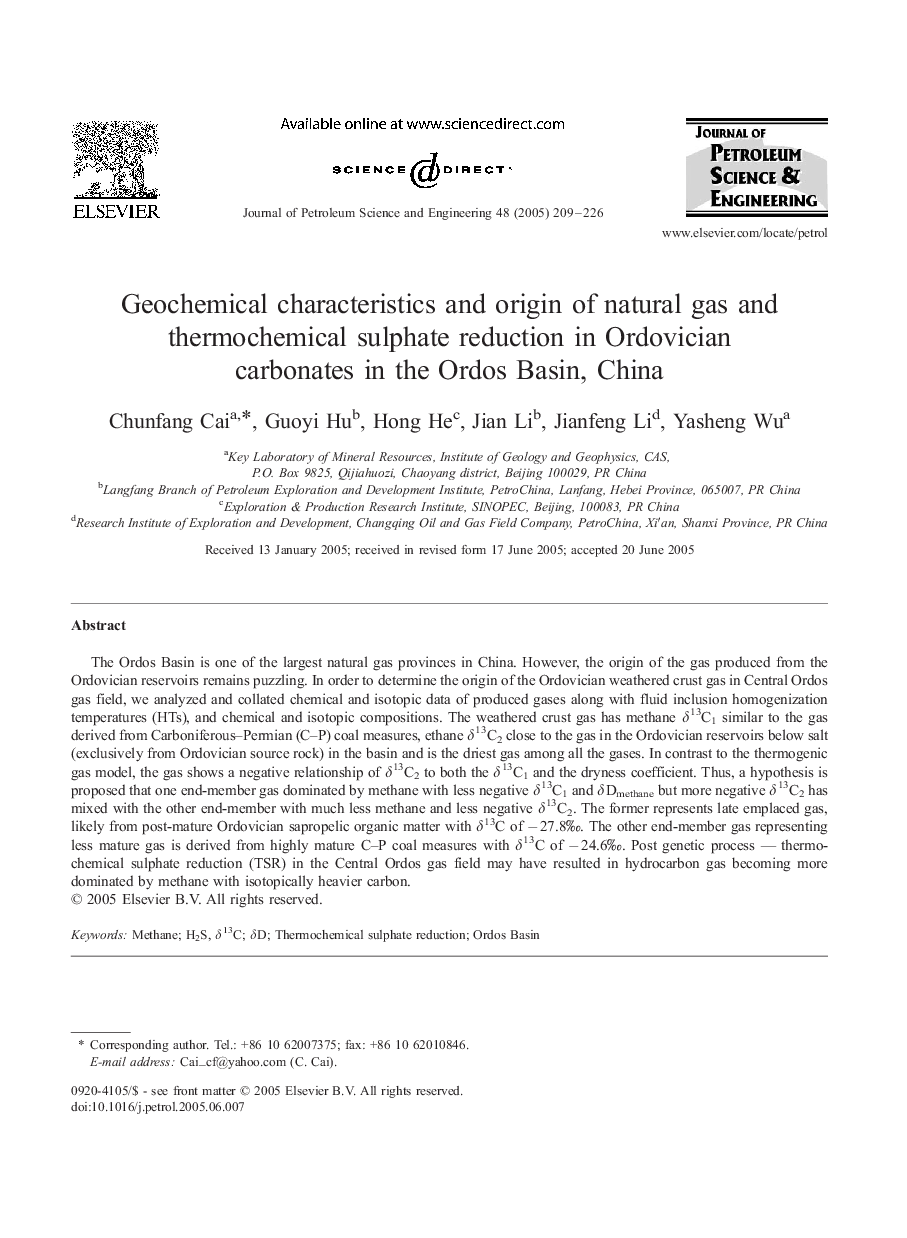| Article ID | Journal | Published Year | Pages | File Type |
|---|---|---|---|---|
| 9826536 | Journal of Petroleum Science and Engineering | 2005 | 18 Pages |
Abstract
The Ordos Basin is one of the largest natural gas provinces in China. However, the origin of the gas produced from the Ordovician reservoirs remains puzzling. In order to determine the origin of the Ordovician weathered crust gas in Central Ordos gas field, we analyzed and collated chemical and isotopic data of produced gases along with fluid inclusion homogenization temperatures (HTs), and chemical and isotopic compositions. The weathered crust gas has methane δ13C1 similar to the gas derived from Carboniferous-Permian (C-P) coal measures, ethane δ13C2 close to the gas in the Ordovician reservoirs below salt (exclusively from Ordovician source rock) in the basin and is the driest gas among all the gases. In contrast to the thermogenic gas model, the gas shows a negative relationship of δ13C2 to both the δ13C1 and the dryness coefficient. Thus, a hypothesis is proposed that one end-member gas dominated by methane with less negative δ13C1 and δDmethane but more negative δ13C2 has mixed with the other end-member with much less methane and less negative δ13C2. The former represents late emplaced gas, likely from post-mature Ordovician sapropelic organic matter with δ13C of â 27.8â°. The other end-member gas representing less mature gas is derived from highly mature C-P coal measures with δ13C of â 24.6â°. Post genetic process - thermochemical sulphate reduction (TSR) in the Central Ordos gas field may have resulted in hydrocarbon gas becoming more dominated by methane with isotopically heavier carbon.
Related Topics
Physical Sciences and Engineering
Earth and Planetary Sciences
Economic Geology
Authors
Chunfang Cai, Guoyi Hu, Hong He, Jian Li, Jianfeng Li, Yasheng Wu,
